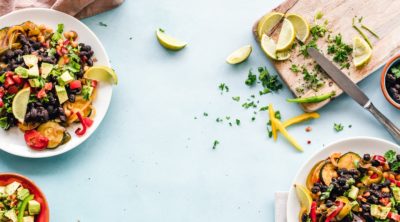Written by Nigel Ford
Western nutritional science excels in a number of areas. Nutritional science has done a fantastic job understanding and identifying the chemical, mineral, and nutritional content of food. It has helped us develop powerful synthetic nutritional supplements and allowed us to recreate vitamins and minerals in a lab.
However, nutritional science also falls short in a few areas. One thing that it fails to acknowledge in great detail is that different people have different constitutions and may process certain foods differently. It also doesn’t take into account the energetic properties of foods, herbs, and minerals that Eastern medicine systems – such as Ayurveda and TCM – have been working with for thousands of years.
In this article, we’re going to discuss how you can develop a diet plan based on your Ayurvedic body type and the energetic constituents of the food that you eat.
The Three Ayurvedic Body Types (Doshas)
In the West, we tend to characterize people’s bodies by their physical traits: big/small, big-boned/thin-boned, muscular/skinny, etc.
In Ayurveda, bodies are described in terms of the different elements that compose the body. The five elements (air, ether, water, fire, and earth) express themselves in different ways.
For example, air is light and moves quickly, whereas earth is heavy and dense. People who embody more of the air element are generally thinner, more agile, and quick-thinking, whereas earth-oriented individuals are usually heavier and more grounded.
The three primary Ayurvedic body types, or doshas, are as follows.
- Vata (air / ether). Embodying the two lightest and most fragile elements, vata people are generally thin, wiry, quick-moving, and fast thinking. They are also more prone to digestive issues (food tends to move quickly through them), insomnia, and anxiety.
- Pitta (fire / water). Pitta embodies the two opposing energies of fire and water. Pitta tends more to reflect the traits of fire, making them passionate, transformative individuals who often have huge aspirations. Pittas may also be prone to burning out or struggle with anger issues.
- Kapha (earth / water). Kapha embodies the two densest elements: earth and water. While kapha people tend to be very grounded, strong, stable, and compassionate, they may also be prone to lethargy and lack of inspiration.
Creating a Diet Based On Your Body Type
In short, the best way to create an Ayurvedic diet is to consume foods with elements that oppose the primary elements of your dosha. Many of the undesirable symptoms of a person’s dosha – anxiety for vatas, for example, or lethargy for kaphas – are caused by an excess of these elements.
A vata would want to consume foods that bring balance to their airy, energetic movements and thoughts. This means that a vata should eat lots of warm, heavy, oily foods to slow them down and improve their digestion.
A pitta would want to eat cooling, watery foods to help them manage their temperament and prevent them from working themselves too hard. A kapha would want to consume firey, airy foods to help promote energy, inspiration, movement, and passion.
While there is certainly a lot more to the Ayurvedic diet than this, these simple tips can help you develop a diet plan that will better suit your constitution and can help you fight off some mental or physical health problems you may have struggled with for a long time.


